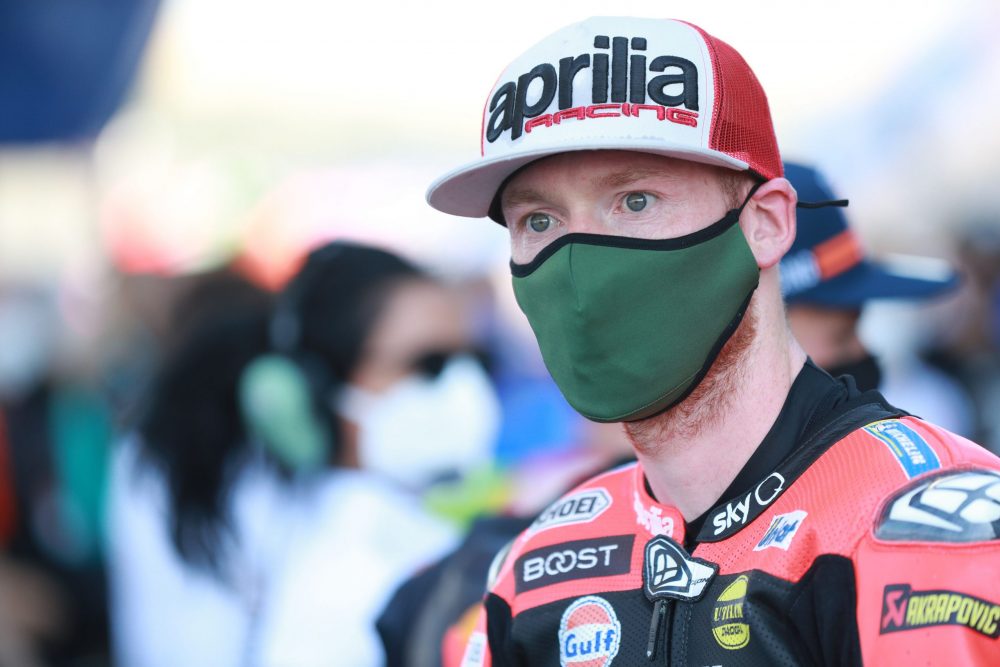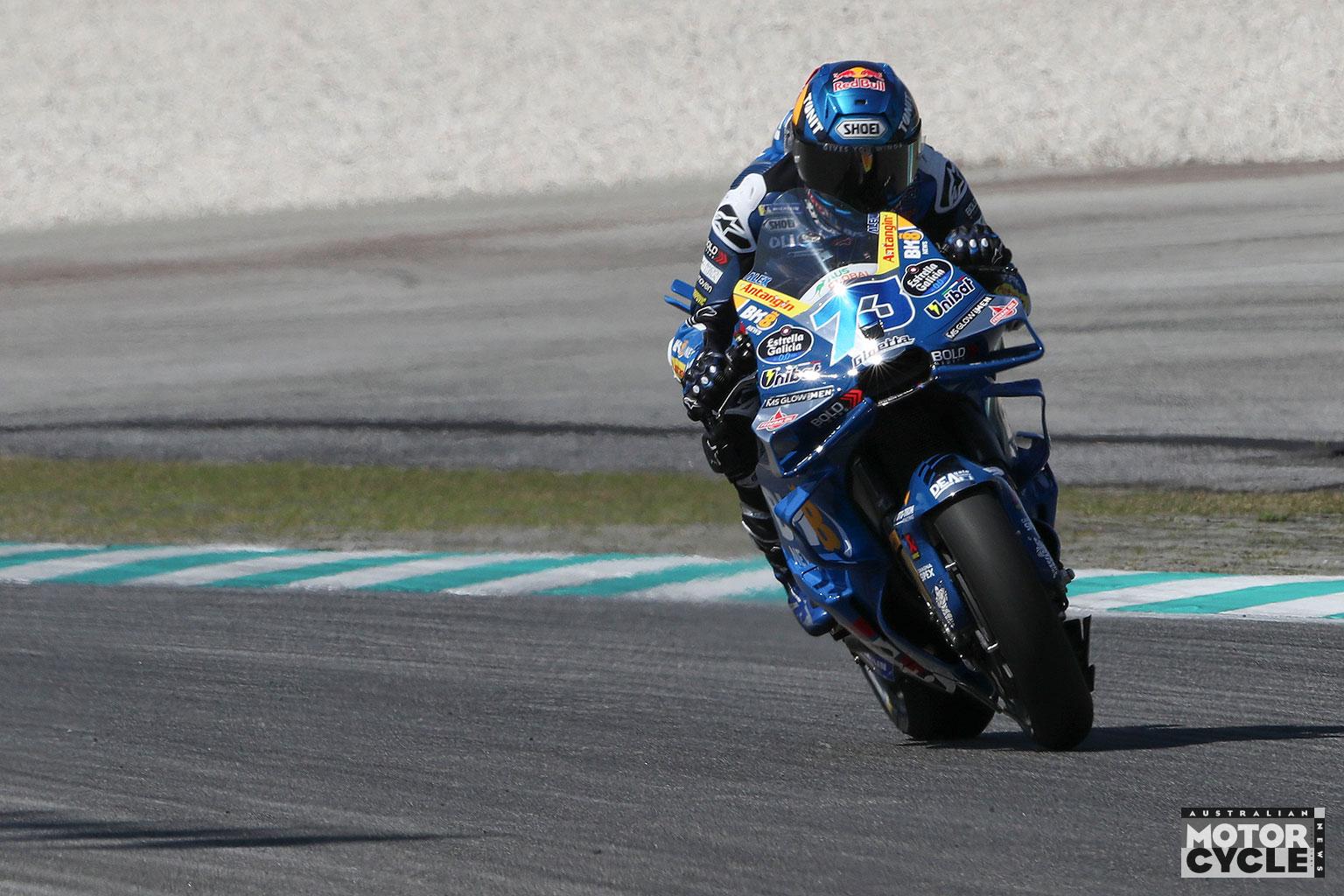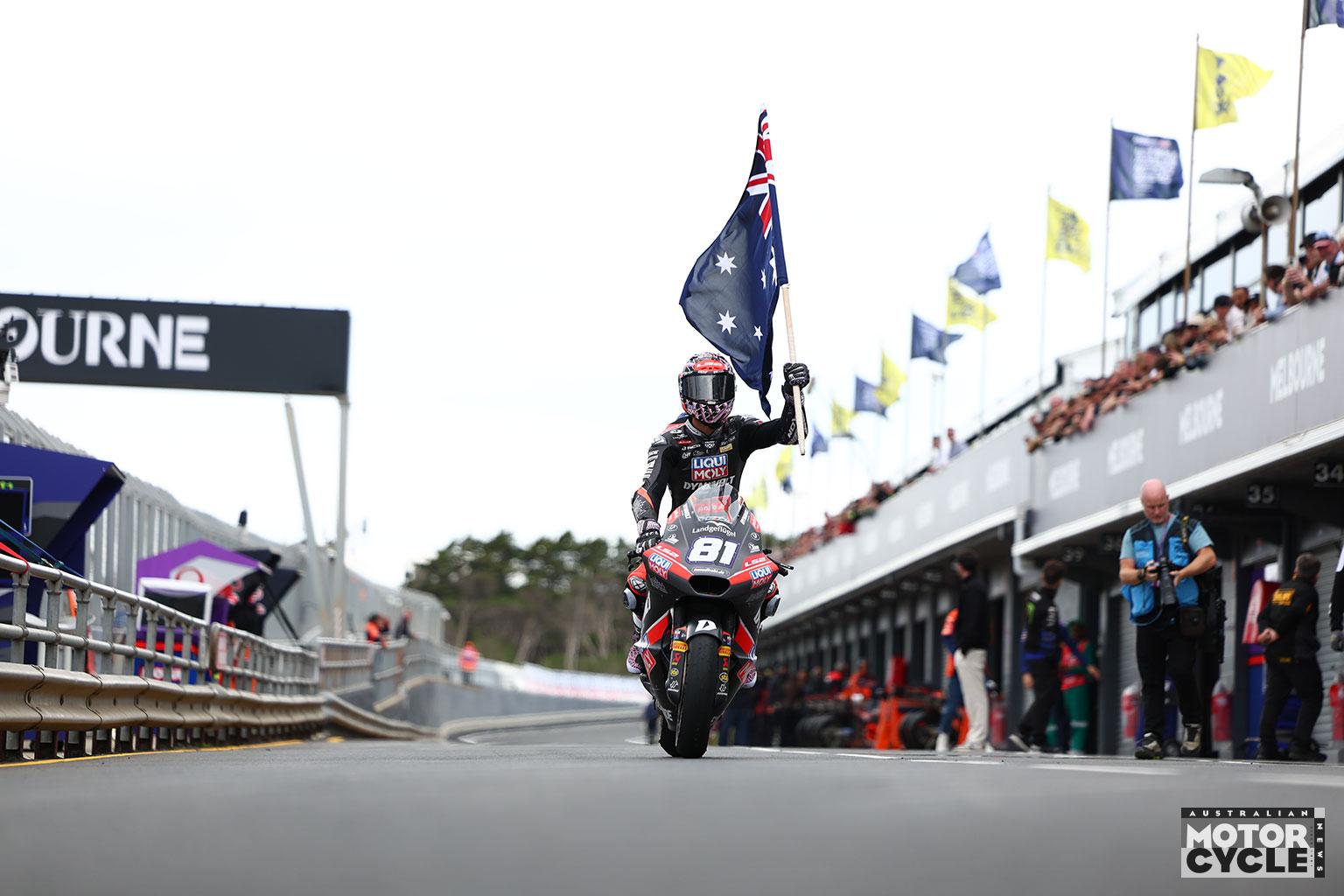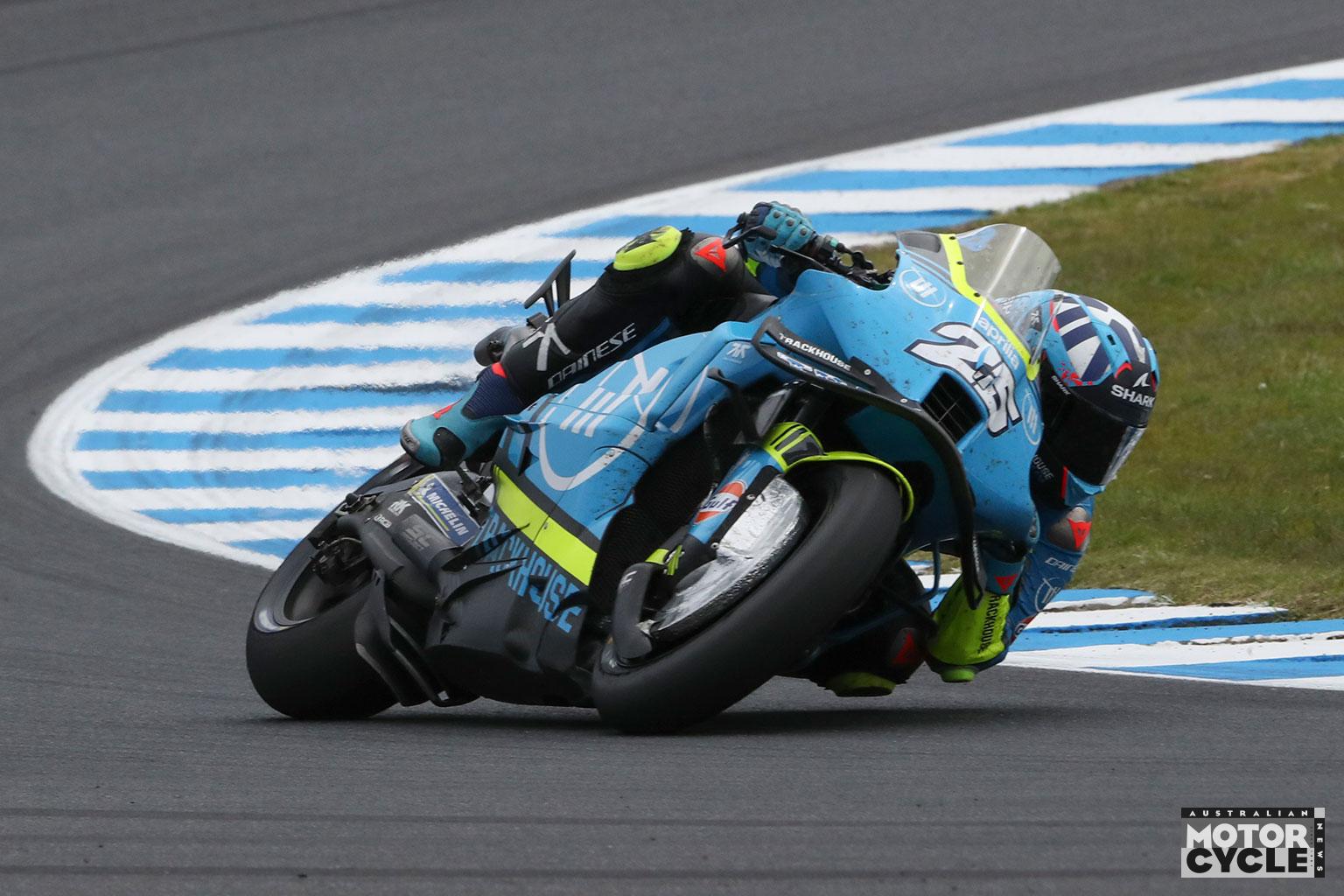Words Neil Morrison Pics GnG
MotoGP in the time of COVID-19
From a television set, the MotoGP experience in the times of COVID-19 doesn’t differ drastically to before: full grids, close sessions, manned garages…
But the experience inside the paddock differs greatly. Due to fears of crowds gathering outside the circuit, hoping to catch a glance of their heroes, police guard the circuit to ensure the public doesn’t get close. Each individual was tested prior to the race weekend. Medical results must be shown upon arrival in the paddock. Only after they have been shown and temperatures have been taken is the individual allowed to enter.
On-site personnel has been reduced by more than half and once inside the paddock, movements and interactions are restricted to the media center. Rossi noted, “it’s very quiet! Don’t have many people! It’s unbelievable for me because I can walk in the paddock for the first time since 1997!”
Dovizioso’s rapid return explained
Just over three weeks ago, the prognosis was bleak: Andrea Dovizioso had fractured his left collarbone in a motocross event in his native Italy. The prospect of facing 25 laps at Jerez, a circuit that has rarely been kind to both the Italian and his Ducati Desmosedici in the past, in the middle of summer was a daunting one before the accident occurred. Now his title chances were under threat before he had even turned a wheel.
But the three-time MotoGP runner-up set about the recovery with his usual intelligence and zeal. He was operated on soon after the fall, with a metal plate attached to the collarbone by six screws. “I called my doctor straight away and he prepared the operation for the same night,” he explained. “To make the surgery on the immediately is very good for the bone.”
“The people around me-my trainer, surgeon and my physio-all know each other very well ad they know me so that helped to make sure we all worked together. I had been working so hard for three months that these three weeks haven’t hurt me. I have a plate on the bone but it’s not a problem. I removed the stitches on Friday and I drove a go-kart to make sure everything was working as planned.”
The injury caused him quite a bit of discomfort on Wednesday, but a day of rest on Thursday allowed him to attack free practice with vigor. “My body, my collarbone, I forgot my situation,” he said on Friday.

Rossi’s deal oh so close, but…
One would be forgiven for thinking the enforced Italian lockdown would have offered Valentino Rossi a glimpse of retired life. Could the lack of airports, irksome fans or photographers’ lenses persuade the 41-year old that life at home wouldn’t be that bad?
It appears not. On Wednesday the nine-time World Champion claimed there is a “99%” chance he will continue with Petronas SRT Yamaha in 2021, meaning he will be racing by the time he hits 42 years of age. In truth, Rossi had concluded he wanted to keep challenging for wins and podiums as early as June. So what’s the hold up?
The two parties (Rossi and Petronas SRT Yamaha) have yet to agree on the personnel of what will be Rossi’s team. It’s understood the Italian is hopeful of brining as many as 20 faces with him from the factory team to the satellite outfit, just as he did when moving from Honda to Yamaha (at the end of 2003) and from Yamaha to Ducati (at the end of 2010).
Petronas management isn’t so keen on this approach, however. Team Director Johan Stigefelt and Team Manager Wilco Zeelenberg smartly recruited experienced personnel in 2018, which went some way to explaining the squads immediate success last year. Rossi’s stay won’t be a long one, and a number of his technicians may retire when he does. For a figure that has eyes on a long stay in MotoGP, this kind of swap doesn’t interest Petronas management.
“We have made an agreement on the matter with him,” confirmed Team Principle Razlan Razali in a post on Facebook. Rossi was unmoved by the delay and believes an agreement will be finalised soon. “This situation (COVID-19) changed the plan,” he said on Thursday. “I have to take my decision without racing. I want to continue. I’ve agreed with Yamaha and spoken with Petronas. Everything is fixed. I didn’t sign the contract because we have to build the team. I think a lot of people will move from one team to the other but we will fix as soon as possible.”
Just how many move with him remains to be seen.

A tale of two yellows
Yellow flags were the talk of the day on Saturday. Firstly because Marc Marquez avoided a grid-place penalty after clearly holding up Rins in FP3. The reigning champ had slowed when navigating a way through turns four and five, much to Rins’ annoyance.
But the reigning champ was pardoned on account of yellow flags being shown at turn two due to Iker Lecuona’s fall. “There was a double yellow flag on turn two and was some marshals and some rider in the middle. So I slowed down. For that reason I didn’t look behind because I didn’t expect that somebody was pushing on that situation.”
Then there was the small matter of Quartararo’s pole lap, set in the final moments. The Frenchman broke the outright circuit record despite Jack Miller and Rins lying in the gravel as he rounded turn eleven. “When you see a yellow flag you don’t go as fast as normal. I was not really at a hundred percent on the limit in this corner but my lap was really good.”
The lack of action from the FIM stewards didn’t impress Aprilia’s Bradley Smith. “I do not agree with the fact that there were riders improving their lap time on the last lap, especially with waved yellow flags and two riders down at turn eleven, two bikes inside the gravel (trap) and maybe up to five or six marshals there. That’s dangerous! I have question marks over who actually deserves to be on pole position today.”

As Quartararo and Viñales lit up the race, there was continued consternation for fellow Yamaha man Rossi. Despite improvements from Friday to Saturday that allowed him to qualify eleventh, the 41-year old was never in the running before he retired from tenth on lap 19.
There was an admission on Friday that “we are always in trouble with the temperature of the rear tire and the grip of the rear tire.” So on Saturday Piero Taramasso, Michelin’s head of two-wheel motorsport, had opined Rossi’s issues aboard the M1 stemmed from his body position on the bike. “He leans off the bike less than the other riders. For this reason he stresses the edge of the tire more and tire temperature rises.”
But Rossi offered a rebuke on Saturday evening. His issues could be explained, he said, by the ever softening constructions of Michelins tires. “If you look at the images I am a lot out of the bike because we worked a lot under this point of view and with the Bridgestone tires we were also more out of the bike than now. So now with the Michelin you cannot stay too much outside. But (Andrea) Dovizioso is another rider that is completely on the bike, but he doesn’t finish the tires.
“The problem is not that. Usually in my career I always prefer hard tyres at the front and rear.Now the Michelin tyres are very soft, very soft casing and very soft rubber, and for me it’s not easy Also because I am more tall, maybe the tallest, for sure more than the average.”

Seeing KTM’s Pol Espargaro and rookie Brad Binder fighting in the leading group spoke volumes of the Austrian factory’s progress. The RC16 had strong races in the past but usually on stop-start layouts that favoured the machine’s renowned braking capabilities.
The Catalan’s sixth place, six seconds back of the race winner equaled KTM’s best dry weather result in MotoGP. But for this to come at Jerez when the track temperature was 53 degrees showed the stellar progress done by test rider Dani Pedrosa.
Racing behind Dovizioso gave Espargaro a chance to compare his machine with Ducati’s GP20. “Actually we’re faster everywhere! We are just losing on the straight against the Ducati. I promise you that we are faster on the brakes, faster on the entry, faster in the corner speed. Maybe they have a bit more traction and then there is the top speed.”

Honda: two steps back, one step forward
A sign of how far off Honda was during preseason came this weekend with the news Marc Marquez had reverted to the factory’s ´19 aero package, as well as an older chassis that was used in 2019. Different swing arms were also used through free practice as the reigning champ sought that front end confidence that is so vital to his approach.
“During all pre-season I was with a different bike, also different aerodynamic package,” said Marquez on Saturday. “Then with the new rules (which only allows one aero upgrade from now until the end of 2021) we just understand that it was not the moment to try new things. Then we come back and we have evolution from ’19 bike.”
The 2019-‘20 RC213V hybrid is as challenging as ever to ride. On Friday Crutchlow offered, “This is the Honda, the front of the bike is really critical to manage it is the Honda’s strong point to tip into the corner, but it’s also our weak point because we have to keep pushing, that is our only chance to gain time over the whole lap. We keep going past that limit.”
Those words proved prophetic on Sunday.

As Marquez faces a potential spell on the sidelines, Ducati could take great heart from the performances of Dovizioso and Miller at a track where its riders have scored just one podium since 2012. The Italian may have stressed the need for further improvements (mainly to aid his feeling with Michelin’s new rear tyre profile), Miller gave a glowing review of the Ducati GP20 over race distance.
“The bike was really good on the tyres and even with the soft tyre I felt that we had plenty left at the end. How it puts the power to the ground is very impressive. It accelerates very fast but how it uses the grip from the rear tyre is definitely the biggest thing. We’ve improved turning and everything else but for a first outing, it’s impressive. I’m very pleased with the work that the Ducati guys put in over the winter. Today should be the foundations of what I hope is a good year.”












